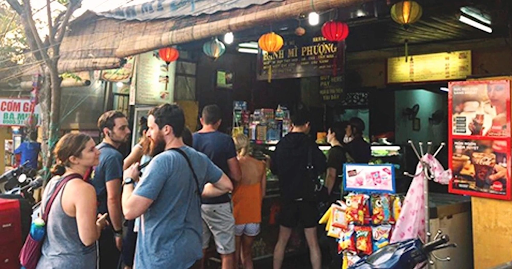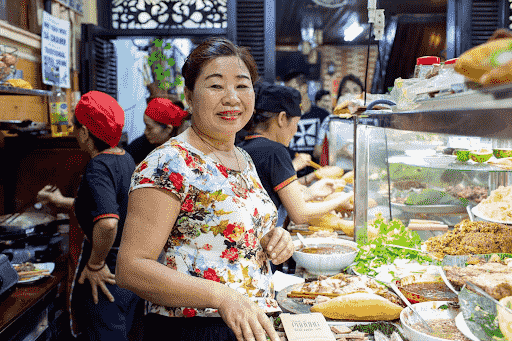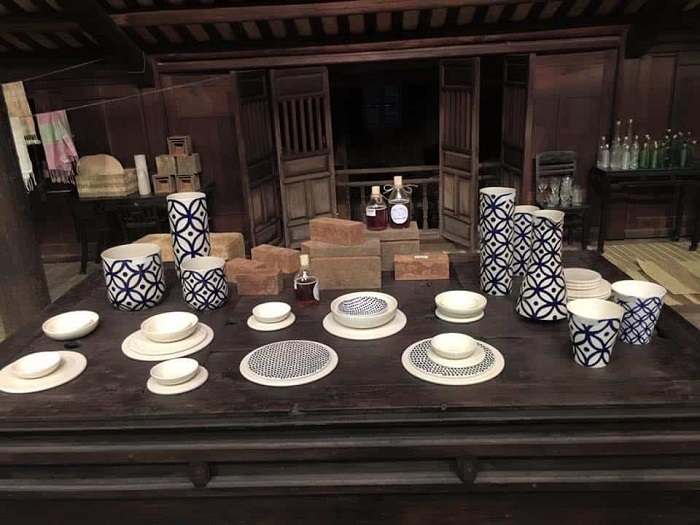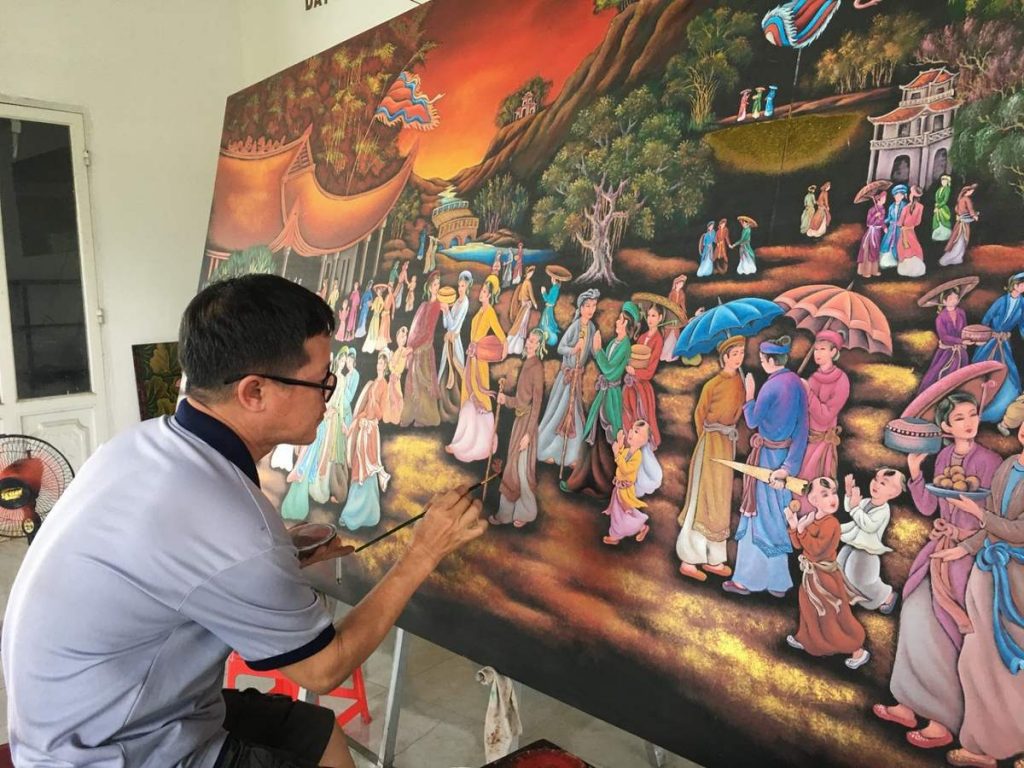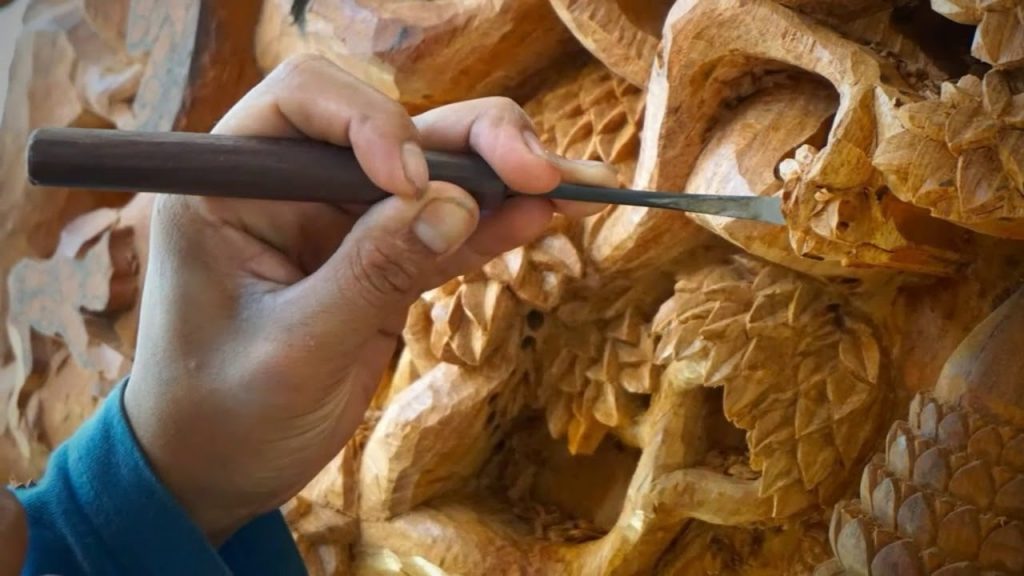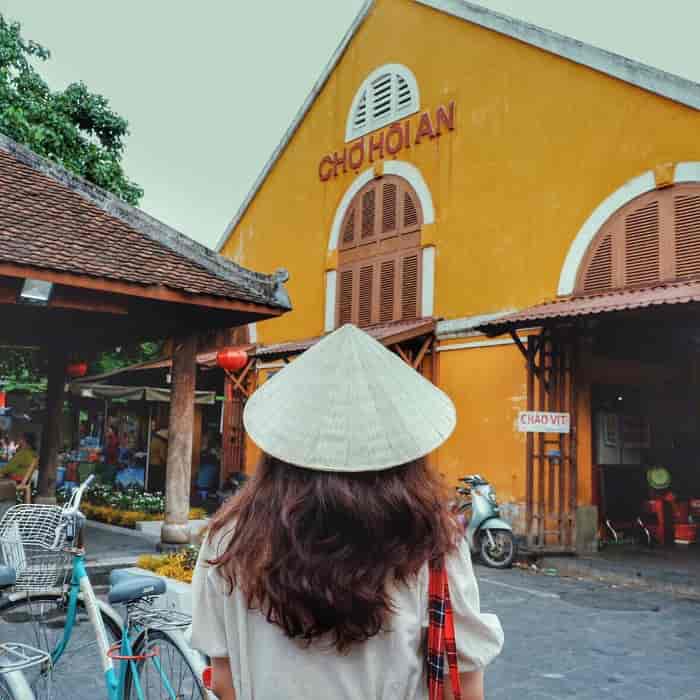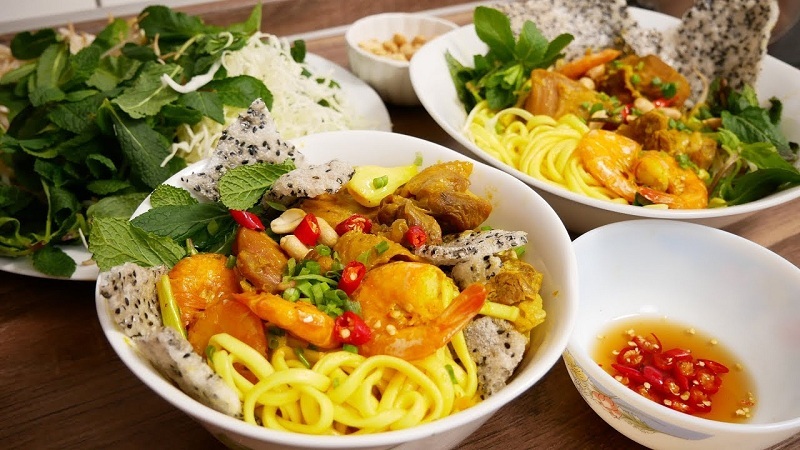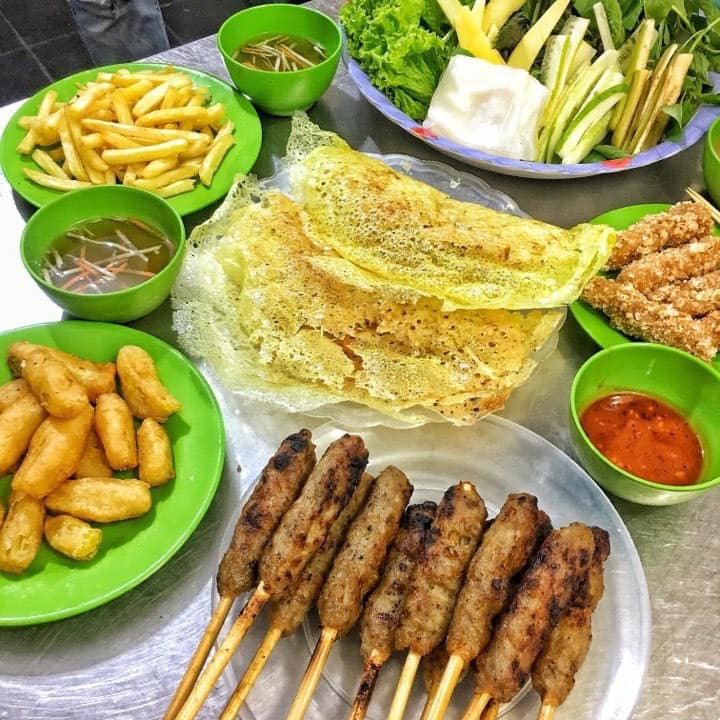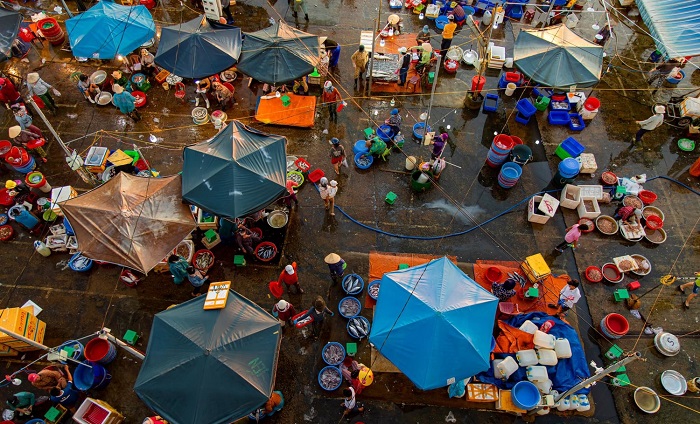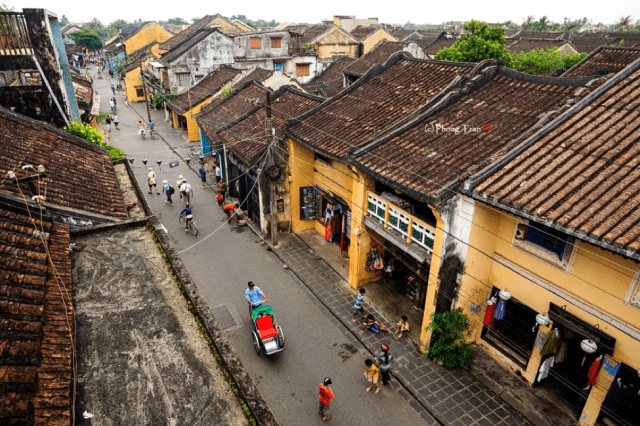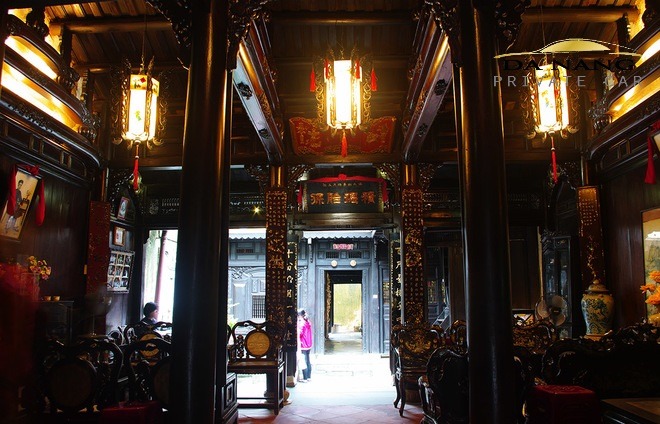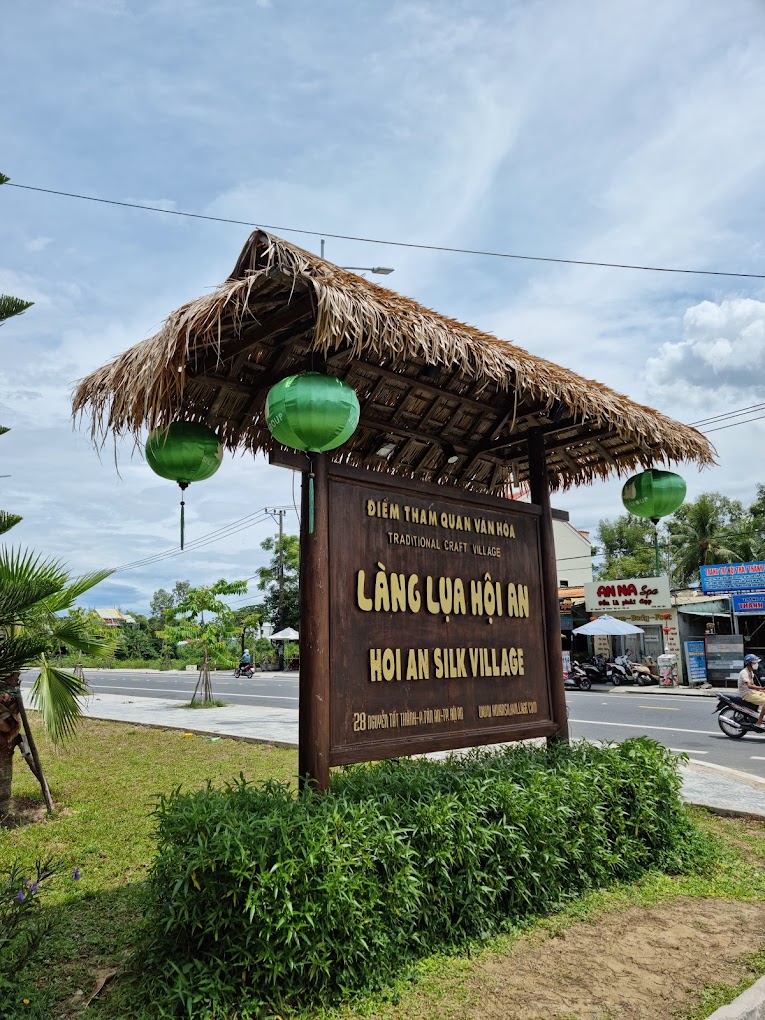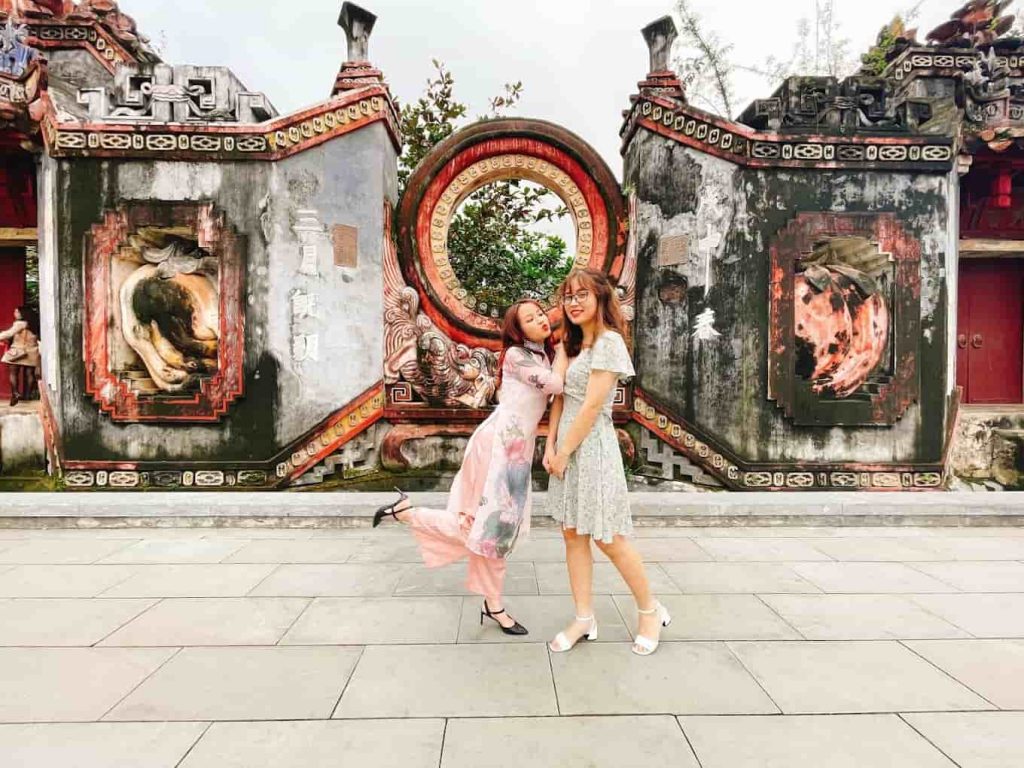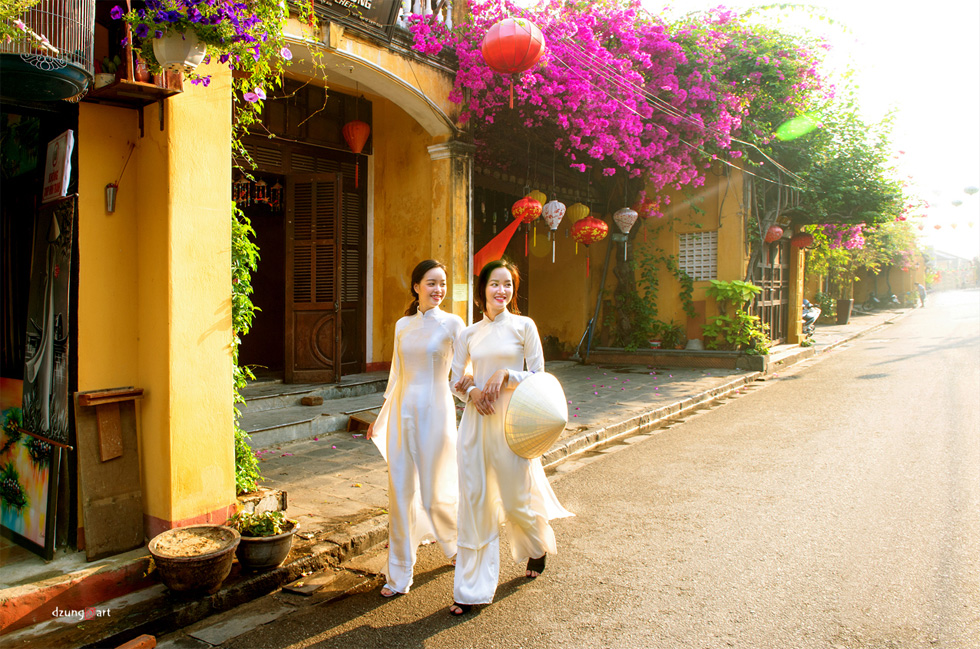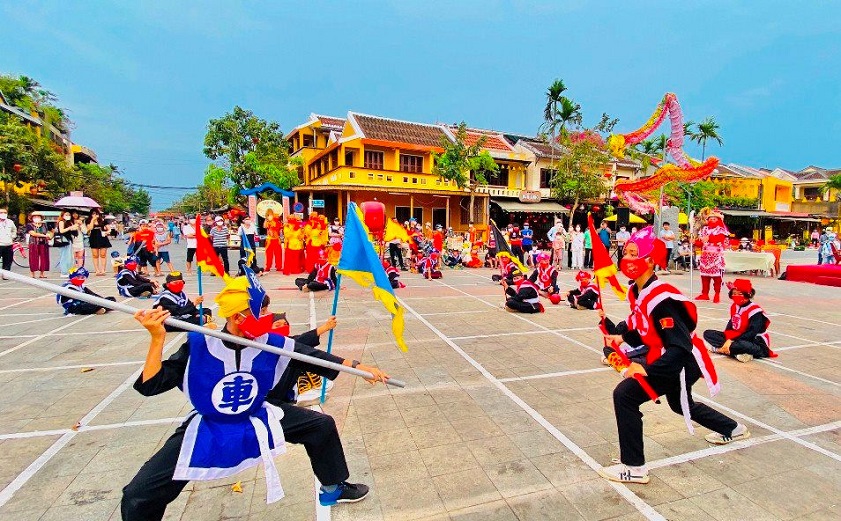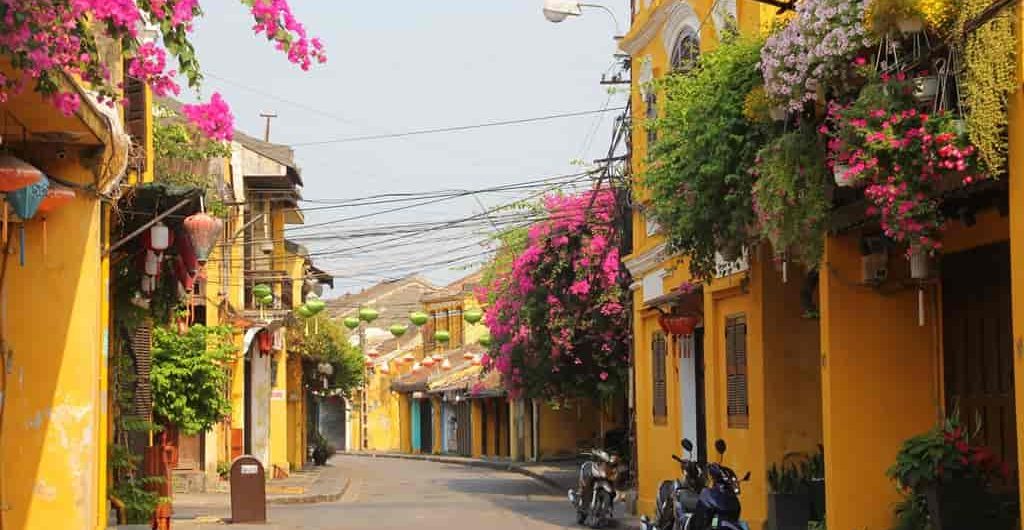With 2 established records, the Hoi An Memories Show is considered the soul of the unique cultural heritage of the ancient town. The performance features hundreds of actors on a large outdoor stage, combined with the integration of sound, light, and more, attracting thousands of domestic and international tourists for enjoyment. Below are some details about the experience and ticket prices for those interested in this program.
Introduction to the Hoi An Memories Show
What is the Hoi An Memories Show?
Also known as the Hoi An Impression Park, the Hoi An Memories Show is the world’s largest live-action performance, first premiered on March 18, 2018. The show draws inspiration from the traditional Vietnamese ao dai, combining it with a highly sophisticated and modern stage setup.
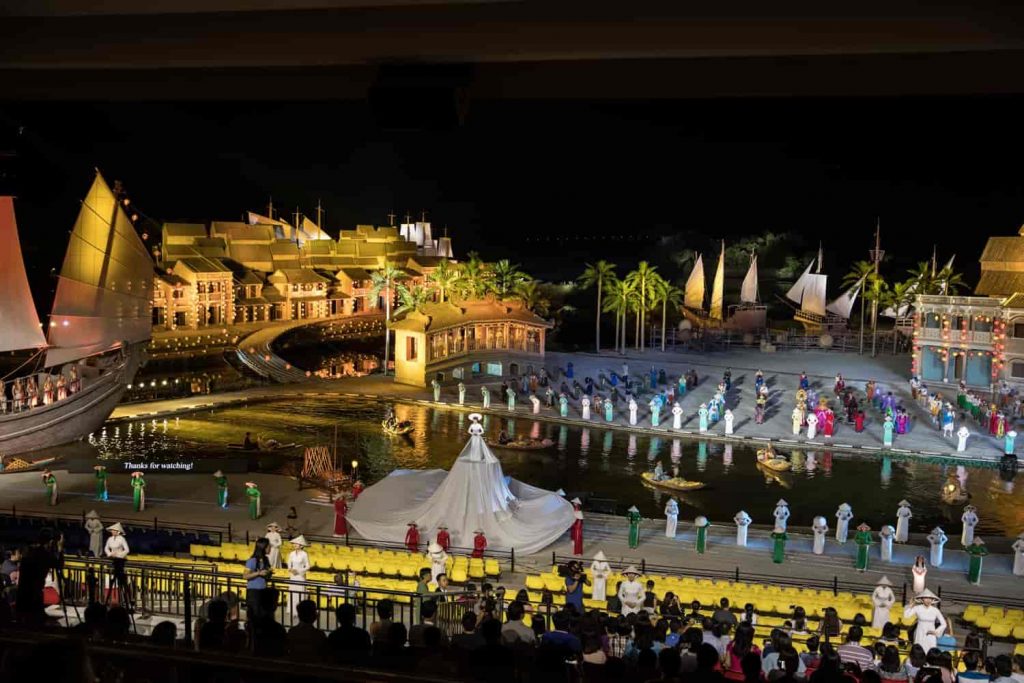
It transports the audience back to the history of Hoi An in the 16th and 17th centuries, providing insights into the ups and downs of the town over its 400-year history. Hoi An was once the busiest trading port in Southeast Asia, serving as the intersection of the legendary Silk Road by sea.
The Hoi An Memories Show is divided into five acts, lasting for 70 minutes. The narrative is guided by a weaving girl, leading the audience through significant moments in the past. Viewers are ensured to be surprised and captivated at every turn.
What makes Hoi An Memories Show impressive?
It’s no coincidence that this is the largest live-action show in Vietnam, setting two world records. What contributes to making Hoi An Memories Show a beautiful and impressive production?
- Stage: Firstly, the vast stage area of 25,000 square meters is recognized as the largest outdoor stage in Vietnam, situated on a picturesque sandbar along the Hoai River, intersected by a canal, providing a fresh and novel setting.
- Actors: The show brings together 500 professional actors, setting a record for the largest number of participants in a live performance worldwide.
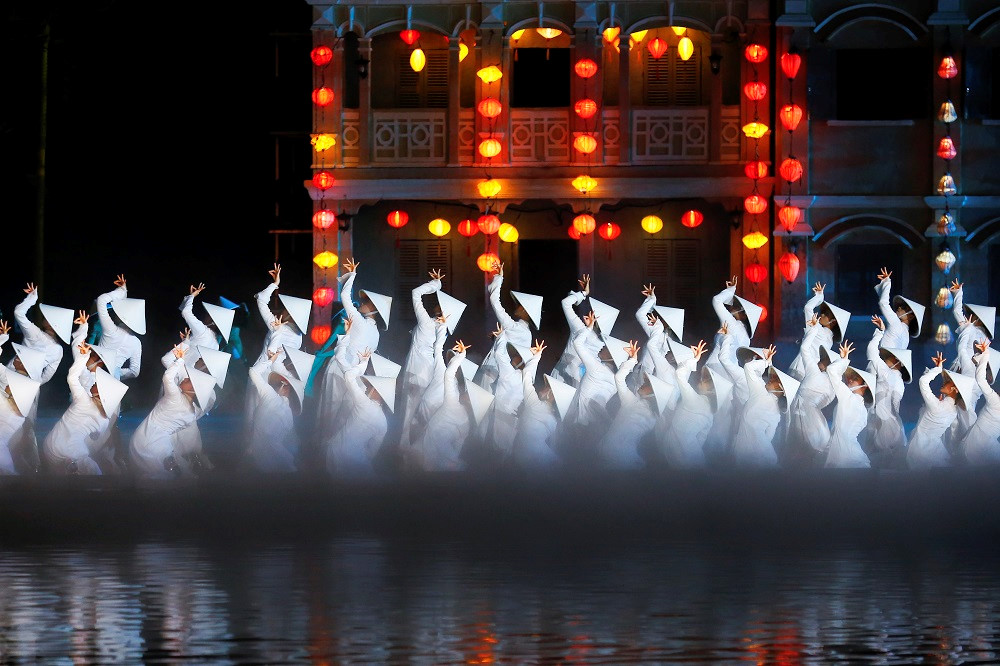
- Models, Props: A special feature is that all the props and costumes for the show are designed and produced exclusively, meticulously investing in the details of images like the Cau Pagoda, wedding processions with elephants, ancient houses, traditional conical hats, ensuring the utmost authenticity.
- Sound, Light: Contributing to the success of the show are the modern sound and lighting effects, creating a perfect spectacle.
- Content: The script is thoroughly researched and constructed, closely adhering to the history of Hoi An and focusing on exploring lesser-known aspects. All daily activities, both past and present, are transformed in a highly interesting manner.
Where and When Does the Hoi An Memories Show Take Place?
Venue for the Hoi An Memories Show
The Hoi An Memories Show takes place at the An Tuong Hoi An Park – Hoi An Impression Theme Park. Unlike other parks, this themed park is considered a lively, impressive, and captivating exhibition of images. If visitors are already familiar with the ancient town, the park will be a refreshing new destination that one wouldn’t want to leave.
The park is located at 200 Nguyen Tri Phuong, Cam An, Hoi An, in the heart of the ancient town named Con Hue – a highly valued location. If coming from Da Nang, it takes about 50 minutes by motorcycle or car (for a distance of 35 km). If starting from the Hoi An ancient town, it only takes 5-7 minutes.
Timing of the Hoi An Memories Show
Tourists visiting Hoi An and wanting to enjoy this special live-action performance can attend on any day of the week (except Tuesday). The program runs from 7:30 PM to 8:45 PM every night. However, it’s advisable to contact in advance because depending on the weather, the program may be postponed.
Guide to Getting to Hoi An Impression Theme Park for the Hoi An Memories Show
Traveling from Da Nang
The travel time from Da Nang is approximately 45 minutes. You can choose from the following transportation options:
- Taxi: This option is suitable for groups of about 4-7 people. Taking a taxi is convenient and comfortable but can be relatively expensive. A 4-seater taxi costs around 300,000 VND/way, and a 7-seater taxi costs around 350,000 VND/way.
- Renting a Private Car: Renting a private car in Hoi An from DanangPrivateCar.com is the best option for international tourists or family groups. Our private car service with a driver holding a sign with your name at the airport ensures a safe and speedy journey. Book your private car service from Da Nang to Hoi An now.
- Park’s Shuttle Bus: For those who have purchased tickets for the Hoi An Memories Show, you can take the park’s shuttle bus at a ticket price of 25,000 VND/person/way. There are two daily trips at 4:00 PM and 5:00 PM. The bus can take you directly to the park or any requested location. Remember to make a reservation in advance!
In addition, you can also take public buses, but these buses only stop at the Hoi An bus station. To reach the park, you’ll need to take another mode of transportation, making it less convenient.
Traveling from Hoi An Ancient Town
Hoi An Impression Theme Park, where the Hoi An Memories Show takes place, is only about 3 km from the center of the ancient town. Therefore, there are several transportation options for you to choose from.
To get to the park, you can choose one of the following two ways:
- By Road: From the center of the ancient town, follow Hoang Dieu Street towards Cau Cam Nam. After crossing the bridge, you’ll reach Nguyen Tri Phuong Street. When you get to number 159, you’ll see a left turn. Continue a few dozen meters, and you’ll see a bridge leading to the park.
- By Boat (Waterway): Go along Phan Boi Chau Street to Tran Quang Khai Street and find number 59. Here, there are boats providing free transportation to the park. The boats operate from 2:30 PM, with a maximum capacity of 30 people. There are 3-4 boats serving daily, running continuously so you won’t have to wait long.
The boat doesn’t take you directly to the area where the Hoi An Memories Show is held but instead to the park’s entrance. No worries, you can walk back if you want to explore before reaching the main gate.
How much are tickets for Hoi An Memories Show?
Latest update on Hoi An Memories Show ticket prices:
Prices for local residents (Quang Nam, Da Nang):
- ECO Class: 400,000 VND/person
- HIGH Class: 550,000 VND/person
- VIP Class: 1,200,000 VND/person
- Free entry for Hoi An Impression Theme Park
The ticket prices for Hoi An Memories Show apply separately to each category.

Prices for visitors from other provinces and foreign countries:
- ECO Class: 600,000 VND/person
- HIGH Class: 750,000 VND/person
- VIP Class: 1,200,000 VND/person
- Free entry for Hoi An Impression Theme Park for domestic guests
Prices for children (based on height):
- Children over 1.4 meters tall: 100% of the adult ticket price
- Children under 1.4 meters tall: Free (one adult can accompany up to 2 children)
- Free entry for the park for children under 1.4 meters tall
For local visitors, please remember to bring personal identification documents: ID card or Citizen Identity Card (for adults) and birth certificate (for children) to be eligible for discounts.
Where to Buy Hoi An Memories Show Tickets?
To purchase tickets, you can choose one of the methods suggested by DanangPrivateCar.com below:
- Buy tickets in person: Visitors can easily buy tickets for the Hoi An Memories Show at the ticket counter located at the entrance of Hoi An Impression Theme Park and make payment directly or through bank transfer. There will be staff to advise and guide you, but please note that if there is a large number of visitors, you may need to wait in line.

- Buy tickets online: You can conveniently book tickets online through the website Hoianimpression.com using the following link: https://booking.hoianmemoriesland.com/en/front-page.html. With this method, you can book anytime, anywhere, it’s simple and fast, saving you time. No need to wait in exhausting queues.
- Purchase at agents, travel companies: This method is also chosen by many people. Currently, there are numerous travel companies and agents providing tickets for the Hoi An Memories Show at standard prices. Just contact them to book, and you will be assisted with delivery to your location. However, remember to choose a reputable company to avoid being overcharged or buying fake tickets.
What do tourists experience when buying tickets for the Hoi An Memories Show?
Hoi An Ancient Town has always been renowned for its timeless beauty, attracting numerous tourists with its ancient mossy-roofed houses, characteristic yellow walls adorned with bougainvillea, unique architectural structures, and the poetic Hoai River. However, if you have the opportunity to visit, besides experiencing these aspects, don’t miss the Hoi An Memories Show.
This special program will leave you with no regrets. You will have a completely different perception with unique memories. Specifically, when purchasing Hoi An Memories Show tickets, you will experience:
- Witnessing a program on the largest outdoor stage in Vietnam, featuring a professional cast and the highest number of participants to date, nearly 500 people.
- Enjoying impressive performances with iconic images, including the traditional Vietnamese ao dai, along with many other images that recreate historical moments, captivating the audience.
- Immersing yourself in a vast entertainment space of up to 25,000 square meters, accommodating up to 3,300 spectators. You will be amazed by the unprecedented scale and grandeur, thanks to the sophisticated, modern, and eye-catching sound and lighting systems.
- Through the performances, tourists have the opportunity to understand more about the history, culture, and people of Hoi An in the 16th and 17th centuries—information that has been less known to many people until now.
- Additionally, tourists have the freedom to explore and discover interesting aspects within Hoi An Impression Theme Park. Enthusiastic individuals passionate about “living in the moment” can freely take photos against backgrounds steeped in traditional elements from the past.
What makes the Hoi An Memories Show attractive to tourists?
The Hoi An Memories Show is created from 5 main segments on a grand scale, using the traditional Vietnamese ao dai as the primary language throughout the program to tell the story of Hoi An 400 years ago. The 5 acts represent different contents, immersing tourists in each narrative.
Genesis – The Establishment of Hoi An’s Hamlet
This is the first act in Hoi An Memories. Genesis vividly recreates the cultural tableau, customs, and daily life of local residents in the past. The scene begins with the image of a village girl sitting weaving fabric with graceful hands, creating soft fabric and a perpetual smile. Genesis also captivates viewers with a path of light created by 100 girls in ao dai. A new life begins in the simple happiness of a young couple. Other authentic scenes include diligent laborers building houses and people engaged in fishing.
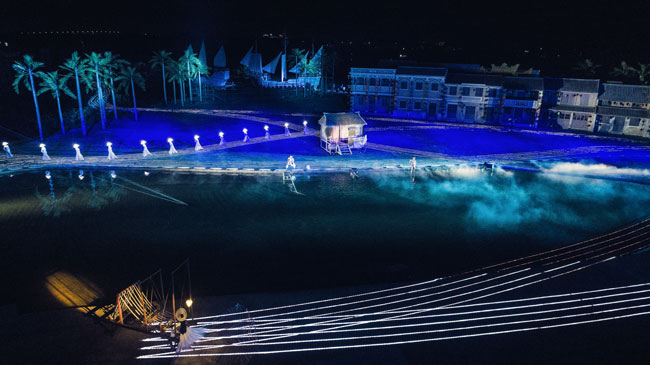
Wedding – Hoi An in the Champa Cultural Period
The Wedding in the Hoi An Memories Show is a deeply impressive act for the audience. Hundreds of actors portray Champa soldiers in dazzling costumes performing lively dances. Notably, the scene includes an elephant statue and a romantic bridge. Everything is vividly and interestingly reproduced, drawing viewers into the wedding of Princess Huyen Tran with the King of Champa. Through the grand wedding procession with an elephant, the show aims to remind future generations of the sacrifice of Princess Huyen Tran, who exchanged her youth for peace for the country.

Boat and Sea – Hoi An in Transition
The Boat and Sea act transports tourists back to Hoi An in the 16th and 17th centuries, a period of new economic development when it became the busiest trading port. The central theme here is the love story of a girl from Faifo who waits faithfully for her lover, a sailor who often has to be far from home. The young man sails across the sea to exchange goods with foreign countries, and they are forced to be apart in longing. The girl releases lanterns on the Hoai River every night, praying for her lover to return soon and maintain a love that lasts a lifetime. Through touching images and stories, this act provides visitors with indescribable emotions and sentiments.
Riverside – Hoi An in the Period of Cultural Confluence
Continuing in the Hoi An Memories Show, this act takes tourists to the period of cultural convergence. The Riverside performance is set against the backdrop of the international market in Hoi An integrating with many countries worldwide in the 18th and 19th centuries. The lively and bustling atmosphere of the busiest port in Southeast Asia at that time is vividly reproduced through images of boats arriving from China, Japan, and some Western countries.
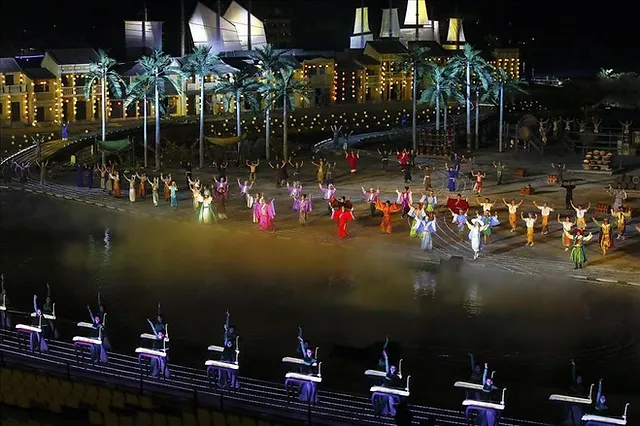
Traders not only exchanged goods but also brought the breath of new and strange cultures to this land. The logical combination conveys the author’s main messages, showing visitors the golden memories of the trading port. Moreover, it helps the audience understand more about the stark social divide between the rich and poor in the old society and a budding capitalist economy.
Ao Dai – Hoi An with the Combination of Ancient and Modern
Hoi An is one of the rare places that, until now, has preserved almost entirely the ancient values of 400 years ago despite the many ups and downs of time and history. Thanks to this, Hoi An is different, becoming a source of pride for local residents and friends everywhere.

The Ao Dai act is the fifth and final act of the Hoi An Memories Show. At this moment, the traditional ao dai is combined with ancient architectural structures. One hundred girls in specialized ao dai walk gracefully on a brightly lit street, or girls ride bikes weaving through the old streets, reenacting a bustling Hoi An. This will make the audience burst into emotions.
It can be said that the combination of content with modern sound and lighting effects, modern and sophisticated. With careful investment in props, performance capabilities, and dance movements, these elements have contributed to the success of the show, conveying the complete meaning to the audience.
Can the Memory of Hoi An show be combined with any activities?
At the Graceful Park in Hoi An, you not only immerse yourself in the artistic space of the Memory of Hoi An show but also enjoy the panoramic view of the sparkling ancient town along the river. Witness the image of a bustling port in the 17th century with many other sightseeing and entertainment activities, specifically:
Explore and have fun at the Graceful Park in Hoi An
Before enjoying the show, you can arrive a bit earlier to take a stroll around the park. Explore themed villages representing the 400-year history located to the right of the park’s entrance. This introduces the distinctive cultural features of Hoi An, such as the architecture of ancient houses and the singing of traditional folk songs.

Or visit the Old Town area on the main street, designed to simulate the highlights of Hoi An’s ancient town. Alternatively, if you prefer, you can go to the area on the left dedicated to children and families to participate in activities such as drawing competitions, cooking contests, and other fun activities for children.
Watch mini shows before the Memory of Hoi An show
In addition to the main Memory of Hoi An program, at the Graceful Park in Hoi An, you can also enjoy impressive mini shows such as:
- Lion dance: from 5:10 PM – 5:55 PM
- Happy Forest: from 5:35 PM – 6:25 PM
- Lady Tam Tang: at 5:25 PM or 6:15 PM
- Chess Point: from 5:40 PM – 6:30 PM
- Princess Ngoc Hoa: 6:45 PM
Enjoy the typical delicious dishes of Hoi An
Most people will have dinner around the ancient town area before coming to watch the show. However, for those travelers who haven’t had a chance to eat yet, they can arrive early to savor unique and delicious Vietnamese dishes, the specialties of Hoi An such as Quang noodles, Cao Lau, Banh Bao, Banh Vac,…
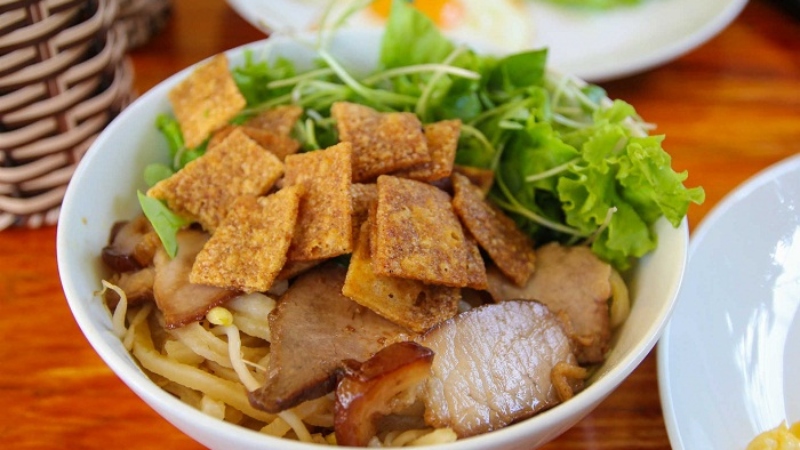
As for those who purchase HIGH or VIP tickets, they will have the opportunity to experience various drinks such as soft drinks, fruit juices, cocktails, mocktails, and wine at the Vietnam Village or Charm Chill Bar.
Other captivating nighttime activities besides the Hoi An Memories show
It’s not by chance that people say Hoi An is most beautiful and enchanting at night. When you come here in the evening, in addition to the Hoi An Memories show, you can also experience other nighttime activities such as:
- Watching Hoi An’s traditional folk singing, “bai choi”
- Strolling through the lantern-lit streets of Hoi An
- Releasing lanterns on the Hoai River
- Exploring the Nguyen Hoang Night Market…

Some notes when watching the live performance of Hoi An Memories:
For those who are watching this performance for the first time, it is advisable to be aware of the following information before attending:
- The show uses minimal dialogue, with English subtitles displayed on the screen to help foreign audiences fully understand the content. Note that foreign visitors should choose seats on the right side for easier subtitle reading.
- Groups traveling in 16-seat or smaller vehicles can enter the park directly. Larger groups will park outside and then be picked up at 59 Tran Quang Khai Boat Station to be taken to the park.
- According to the organizers of the Hoi An Memories live performance, visitors are not allowed to film or take pictures in any form during the program to avoid leaking the content.
- ECO class tickets are marked with yellow and green seats, arranged closest to the stage with a total of 2,200 seats, suitable for those who want a close-up view. HIGH class tickets are red seats in the middle with a wider viewing angle. VIP class tickets are in the topmost row, completely covered, with the widest viewing angle.
- To secure a preferred seating position, it is recommended to arrive as early as possible before the show starts. This way, there will be more seating options. If budget allows, consider purchasing HIGH or VIP tickets.
Above is the complete information about ticket prices as well as tips for attending the live performance of Hoi An Memories. It is hoped that through this, travelers can gain a better understanding of this program. Rest assured that after watching the show, you will be amazed by the grand scale, magnificence, and meticulous attention to detail in the script, stage, props, and the actors. If you visit Hoi An, be sure to spend an evening experiencing it!




